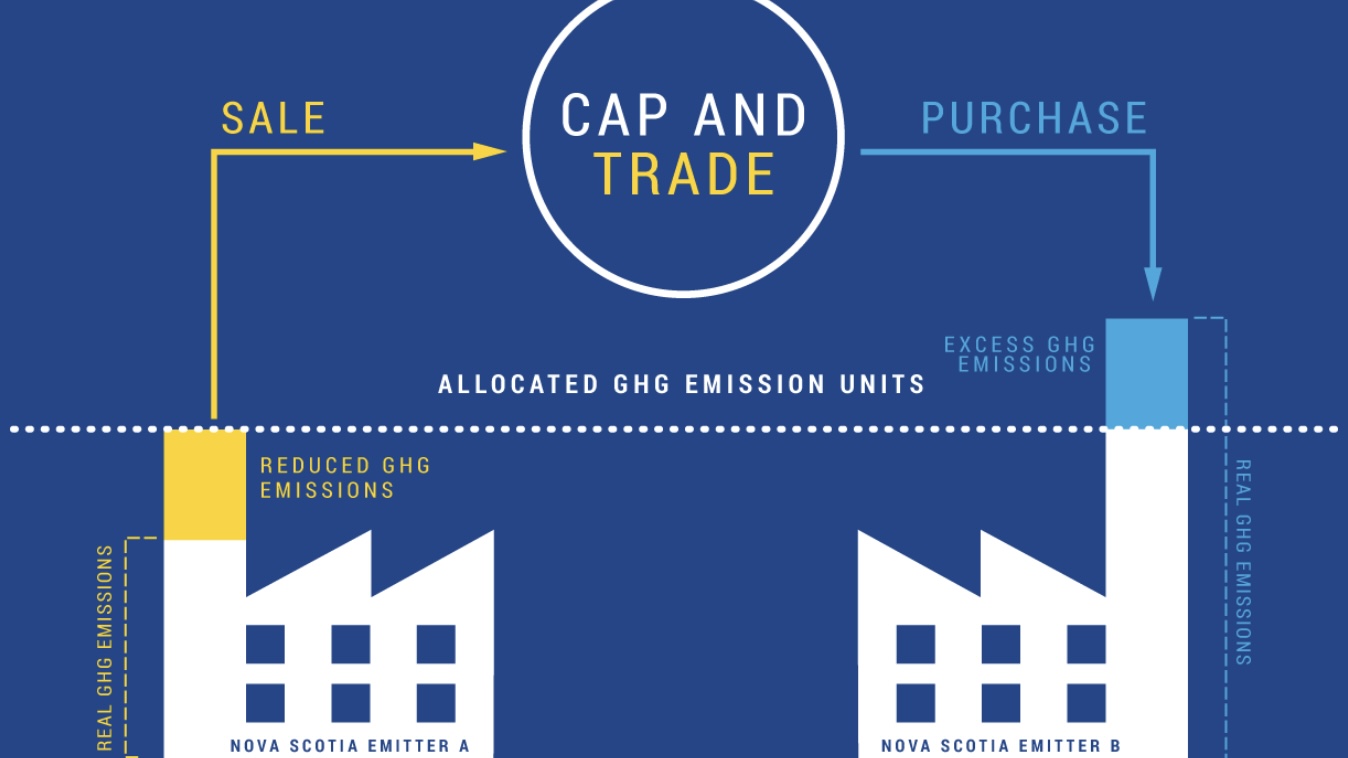Polluters to pay more for carbon emissions, public accounts committee told

caption
A diagram of how Nova Scotia’s cap-and-trade program works.MLAs were warned on Wednesday that more stringent carbon pricing is on the way.
“Nova Scotia is a national leader in reducing greenhouse gas emissions. We’ve already reduced our total emissions by almost 30 per cent below 2005 levels,” Lora MacEachern, deputy minister for the province’s Department of Environment and Climate Change, told the public accounts committee.
“Based on our actions, we are on a course to meet our 2030 greenhouse gas target of 53 per cent below 2005 levels and net-zero by 2050,” MacEachern said.
MacEachern said her department is working on a climate plan to be released in the spring to detail more actions.
“We worked hard to create a carbon pricing program that works for Nova Scotians,” MacEachern said. “We are also working on what comes next.”
Last year the federal government updated its benchmark requirements for provincial programs beginning in 2022 through to 2030.
“This means all provinces and territories must implement more stringent programs,” MacEachern said.
The department is evaluating the program and comparing it to the federal requirements. To meet the goals after the four-year compliance period, “we need to change our program to meet the new benchmark,” she said.
The federal government is asking for fairness and consistency across the country. Their changes include “a higher price on carbon, more greenhouse gas emissions covered, and the removal of some exemptions and design options that would negate the impact,” MacEachern said.
The federal government gradually raised its carbon price benchmark during the last four-year period. From 2019 to 2022, it started at $20 a tonne and increased to $50 a tonne.
The new guidance updated that amount to an increase of $15 per tonne every year until it reaches $170 in 2030, said Jason Hollett, the executive director of climate change in the Department of Environment.
“There’s a lot more stringency in terms of what provinces have to do to meet those objectives,” Hollett said.
Options for the province’s changes to the program include “a full carbon price, that’s what you see in B.C. and the Northwest territories,” Hollett said.
This would mean a flat carbon tax applied at the point of sale.

caption
MLAs meet virtually for a public accounts committee meeting to discuss Nova Scotia’s cap-and-trade program.“So if you fill up your tank or getting home heating oil or natural gas, you would see a charge for that carbon tax and that matches the federal increase,” Hollett said.
The second option is cap-and-trade, which is what Nova Scotia does. This involves modelling greenhouse gas emission carbon rates after the federal government’s amount.
The cap-and-trade program, established in January 2019, promised to keep the carbon pricing low for Nova Scotians while reducing greenhouse gas emissions.
The program sets annual caps, limiting how many tonnes of greenhouse gas emissions are allowed in the province.
“That put a price on carbon pollution,” MacEachern said.
MacEachern said the program has raised $73 million for the province’s Green Fund, which must be spent on reducing greenhouse gas emissions. The Green Fund is collected through emission allowances, applicable fines, and accrued income, which will support provincial climate change initiatives.
“The cap-and-trade program took the burden off everyday Nova Scotians and put it on the biggest polluters,” Liberal MLA Brendan Maguire said during the meeting’s question period.
He added that while prices are rising, referring to Nova Scotia Power’s application to raise electricity rates, “the last thing people need is a huge amount of money coming out of their pockets.”
“I think it’s very important that every single MLA and member stand up and fight, especially when it comes to the solar program. This is the time,” Maguire said.
The government said on Wednesday it will take steps to protect the province’s solar power industry. It said additional support is being considered for solar programs.
“I will applaud the government for doing a 180 on their position,” Maguire said.
Maguire pointed out that Nova Scotians overwhelmingly believe in climate change and in protecting the province’s coastlines.

